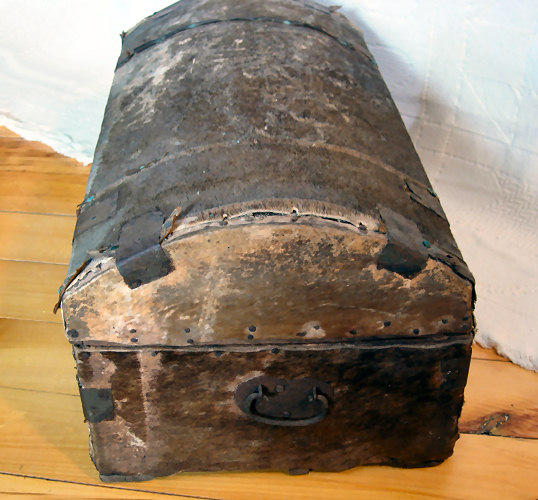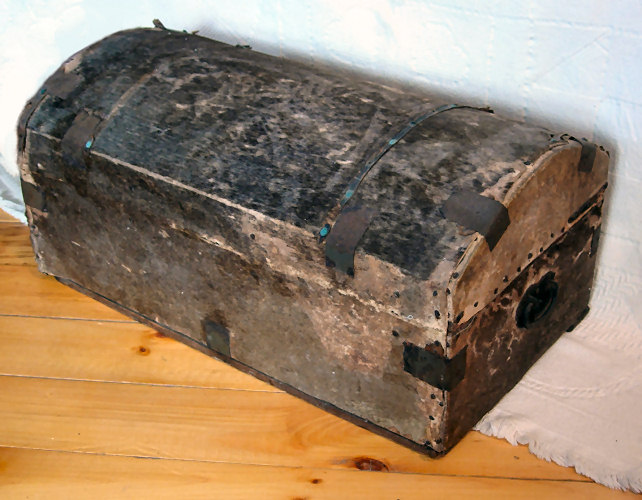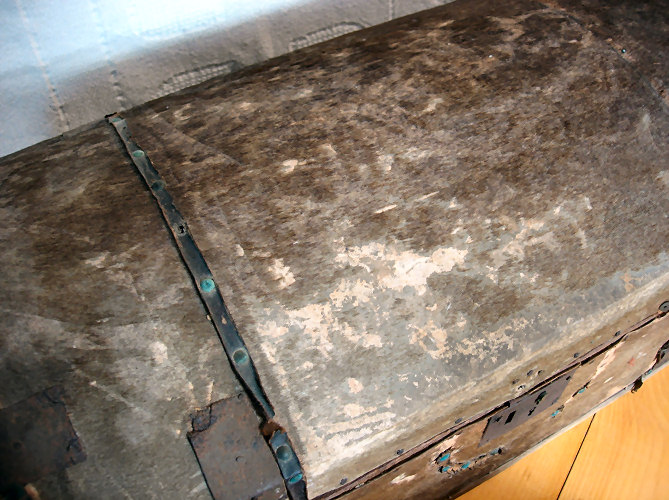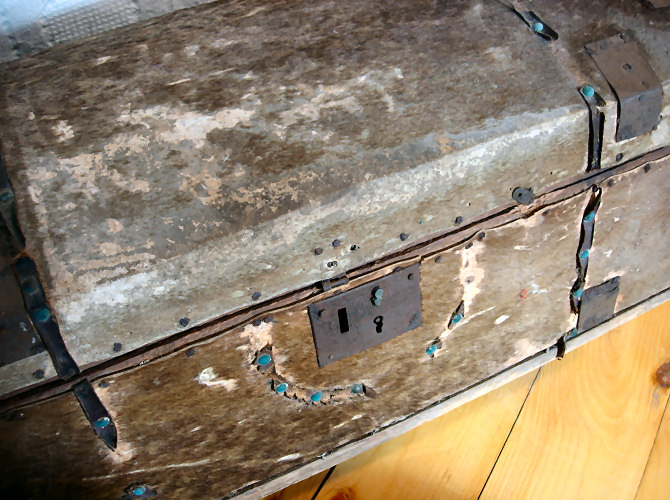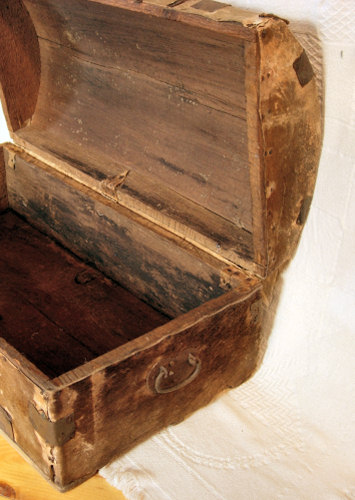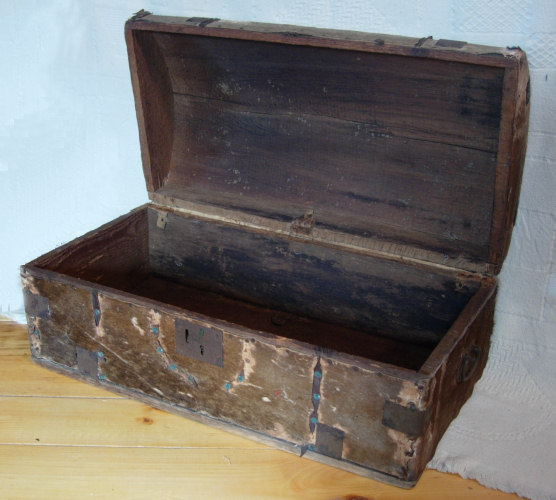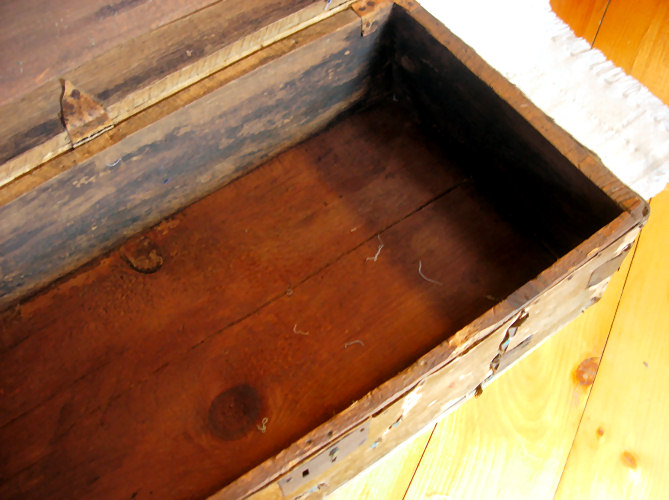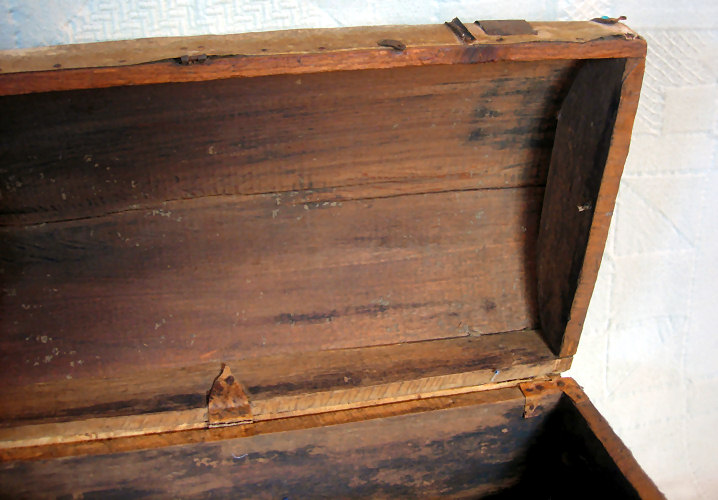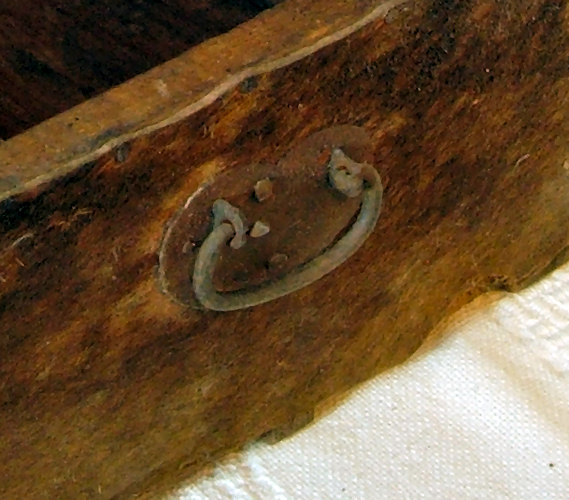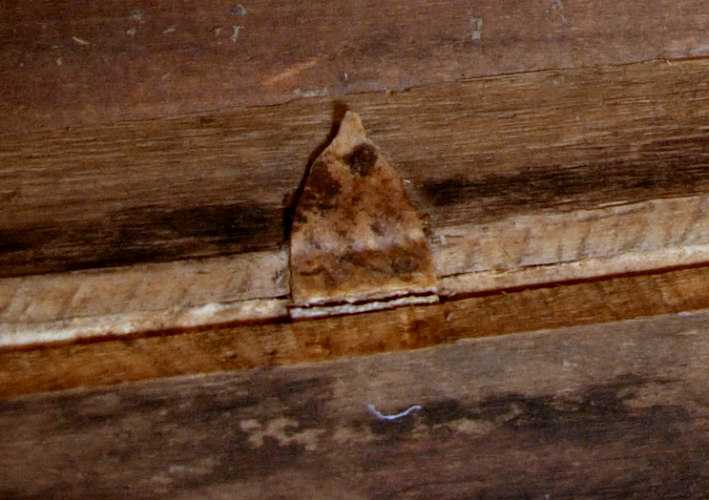

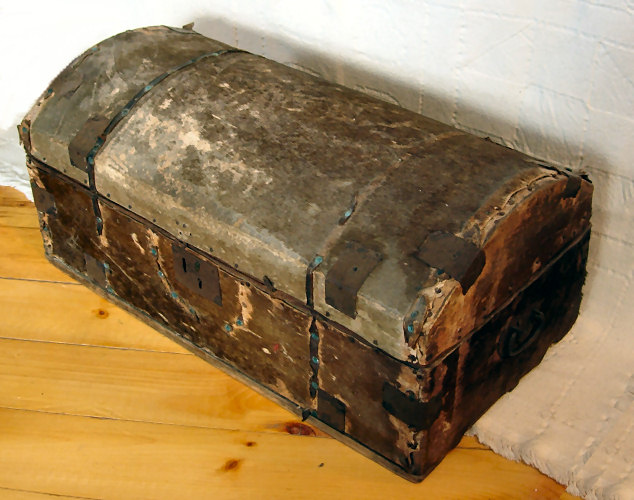
| Hide covered trunks were wooden trunks (generally small with domed lids) which were then covered with deer hide / skins. This type of hide covered trunk was common for travelers. Perhaps the water (i.e. rain) shedding capability of deer skin was the motivation for covering these trunks with that material. Note the handles, with the upturned ends to prevent the knuckles from being rubbed when the trunk is carried. Also note that there are no metal hinges. The deer hide, itself, serves as the hinge, although there is a small (deer hide) tab at the center of the trunk, which is tacked on to the lid and body of the trunk. This was probably added to ensure that, if the hinge would begin to tear, the lid would remain attached at least at that point. There is no evidence that there had ever been any paper attached to the inside (as with trunks of the Victorian Period) to hide the wood surface. When originally constructed, the trunk had thin rawhide strips to help anchor the hide covering. Although the rawhide strips have, over time, disintegrated, most of the tacks holding them in place remain. Also note the dark rectangular shapes that are bent over the trunk. These are thin pieces of metal, perhaps tin, that were added to help stabalize the pieces of the trunk. They, of course, were added after the deer hide had been attached. In view of the fact that the pieces are uniform in size, and positioned rather symmetrically over the trunk, they were probably part of the original construction of the trunk. |
